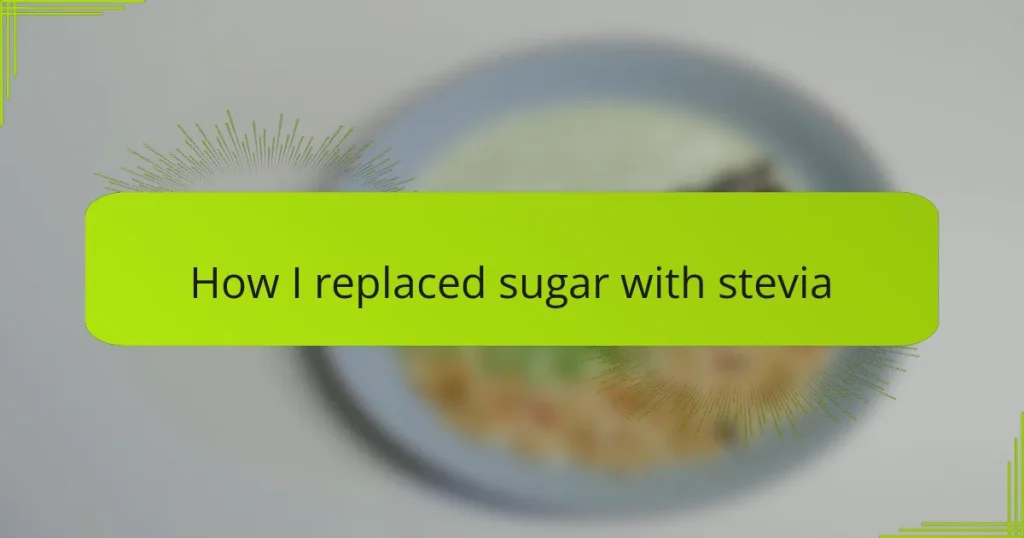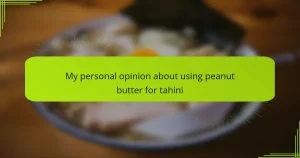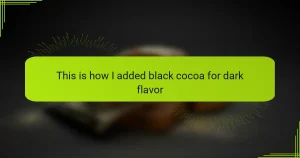Key takeaways
- Stevia is up to 200 times sweeter than sugar with zero calories, allowing for healthier dessert options without sacrificing taste.
- Using stevia affects recipe texture and moisture retention, necessitating careful adjustments in quantity and cooking times.
- Starting with small amounts of stevia and combining it with other natural sweeteners can enhance flavor and reduce aftertaste.
- Experimenting with stevia-based recipes encourages creativity in baking and can lead to delicious outcomes with a healthier twist.
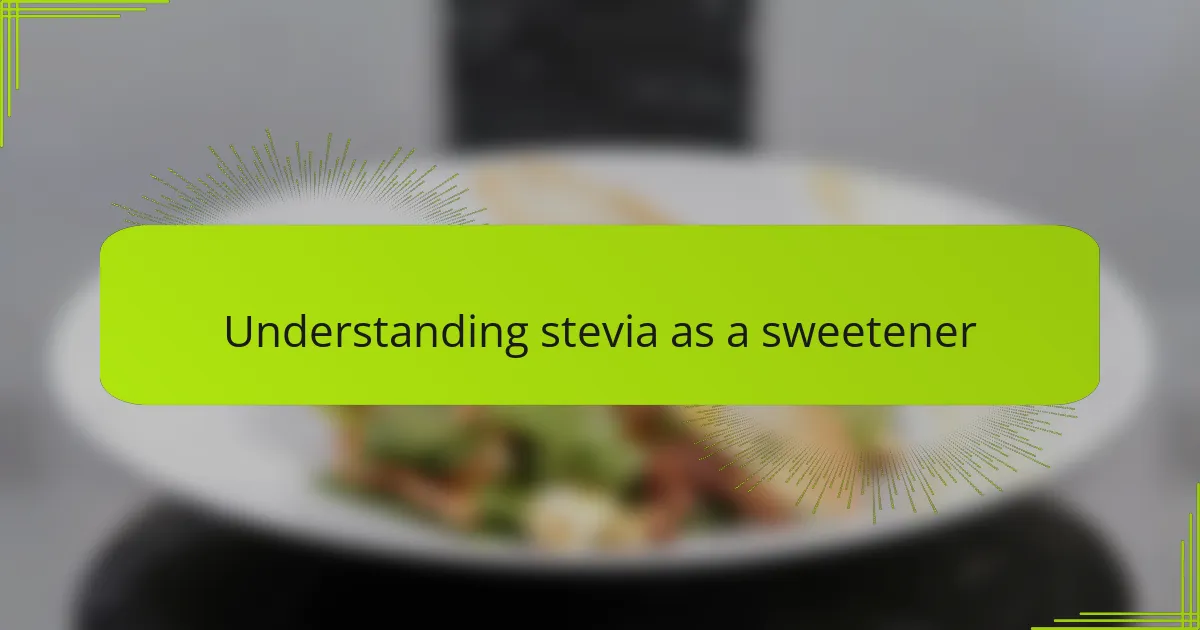
Understanding stevia as a sweetener
Stevia is a natural sweetener derived from the leaves of the Stevia rebaudiana plant. What struck me is how intensely sweet it is—up to 200 times sweeter than sugar—yet it has zero calories. This made me wonder, could such a small, plant-based ingredient really replace something as familiar as sugar in my desserts?
When I first tried stevia, its distinct aftertaste caught me off guard. I asked myself, “Is this a trade-off I’m willing to make for a healthier option?” Over time, I learned that the key is finding the right balance and form—whether powder, liquid, or extracts—to suit different recipes without overpowering the flavor.
Understanding stevia’s unique properties helped me appreciate its role beyond just sweetness. It doesn’t just sweeten; it influences texture and moisture in baking, which is something I hadn’t considered before. Have you ever thought about how a sweetener might subtly shape your dessert’s entire character?
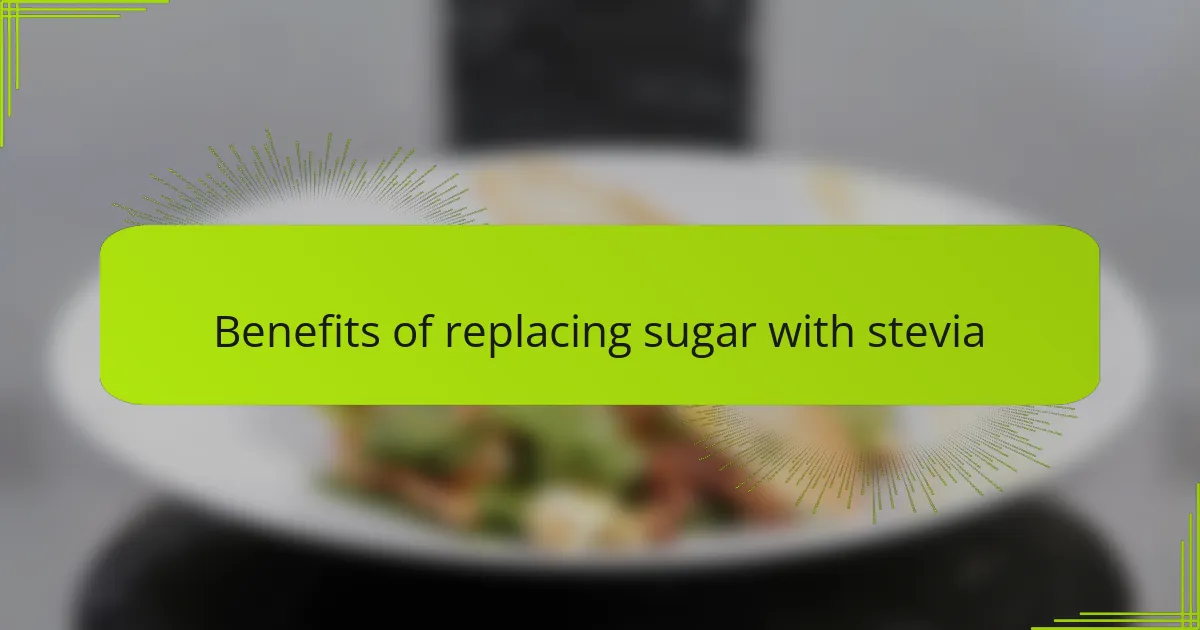
Benefits of replacing sugar with stevia
One of the biggest benefits I noticed when I switched from sugar to stevia was how much lighter my desserts felt—not just in calories but in aftereffects. I no longer experienced that sluggish heaviness that sugar sometimes brings. Have you ever felt weighed down after indulging in something sweet? That’s the kind of difference stevia made for me.
Another surprising upside was the impact on my energy and mood. Since stevia doesn’t spike blood sugar, I avoided the typical crashes that used to follow my sweet treats. This steady feeling gave me more control over cravings, which I found really empowering in my dessert experimentation.
I also appreciated that using stevia aligned with my goal of making desserts a little healthier without sacrificing enjoyment. It felt good knowing I was choosing a natural alternative that didn’t compromise taste or texture—just a different kind of sweetness that still satisfied my sweet tooth. Would you believe that such a tiny plant could have such a big impact?
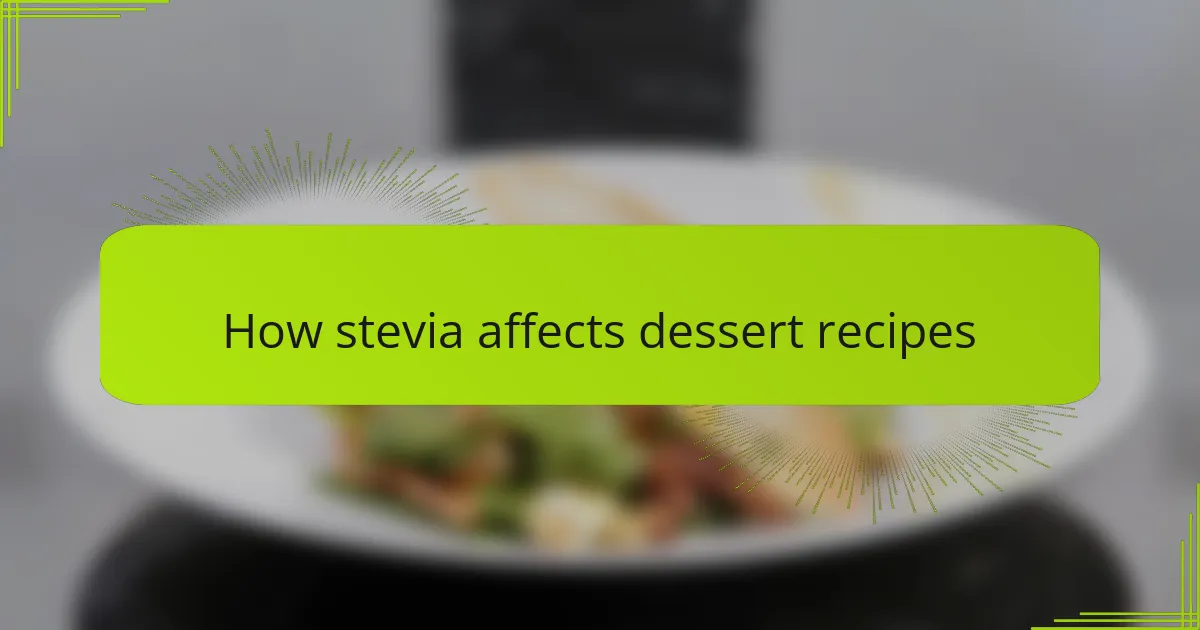
How stevia affects dessert recipes
Stevia’s intense sweetness means I often have to adjust the amount I use in recipes—just a pinch can replace a spoonful of sugar. This change sometimes left me wondering how such small quantities could maintain the familiar sweetness without turning the dessert bitter or oddly flavored.
I noticed that stevia doesn’t caramelize the way sugar does, which really altered the texture and color of some treats I made. Have you ever expected that golden crust or chewy bite but ended up with something softer or paler? That was a surprise for me at first, and it took some tweaking to get the balance right.
What fascinated me most was how stevia influences moisture retention. My cakes and cookies often turned out more moist, which I actually appreciated, but it also meant cooking times and consistency needed careful attention. Have you experienced how a simple switch can ripple through every part of a recipe’s outcome? It’s a subtle dance, but one worth mastering.
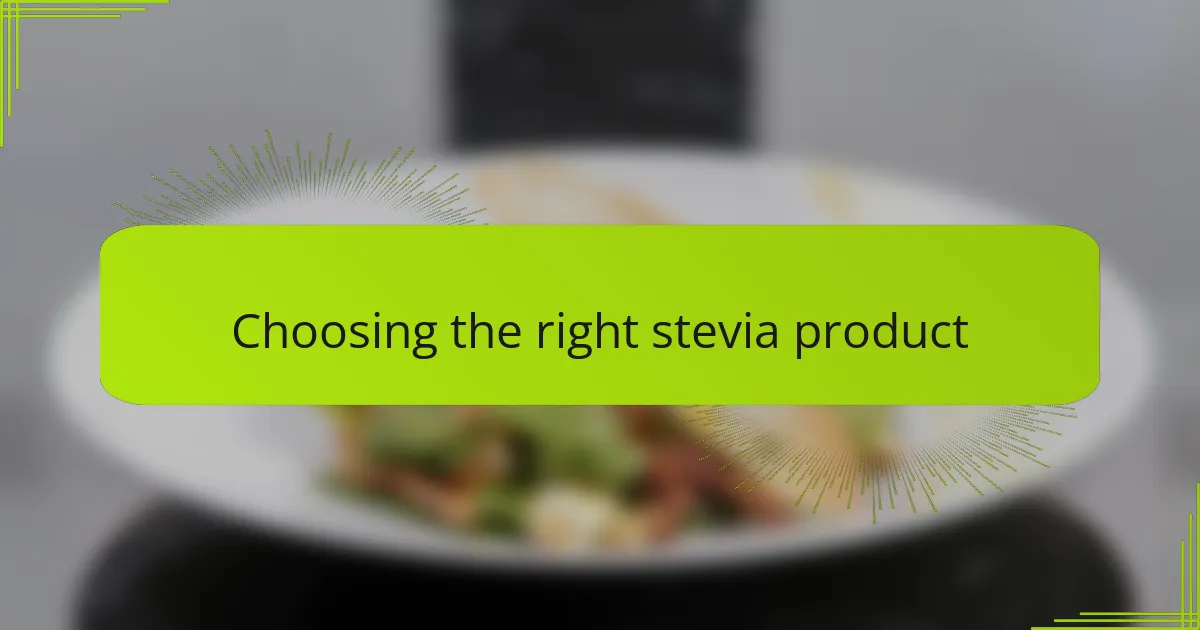
Choosing the right stevia product
Choosing the right stevia product was a bit of a puzzle for me at first. Should I go with powder, liquid, or blended forms? I found that liquids work wonders for beverages and sauces, while powders are more versatile in baked goods—finding that fit really changed how seamless the swap felt.
I also realized not all stevia products taste the same. Some had a stronger aftertaste that threw off my desserts, while others blended in almost invisibly. Have you ever been caught off guard by a slight bitterness where sweetness should be? That’s exactly why I experimented until I found brands that matched my flavor expectations.
What surprised me most was how the format influenced measuring and mixing. Stevia drops required a bit of finesse—too much, and you get an overpowering sweetness, too little, and the dessert feels flat. That trial-and-error process made me appreciate how choosing the right product is just as important as using stevia itself.
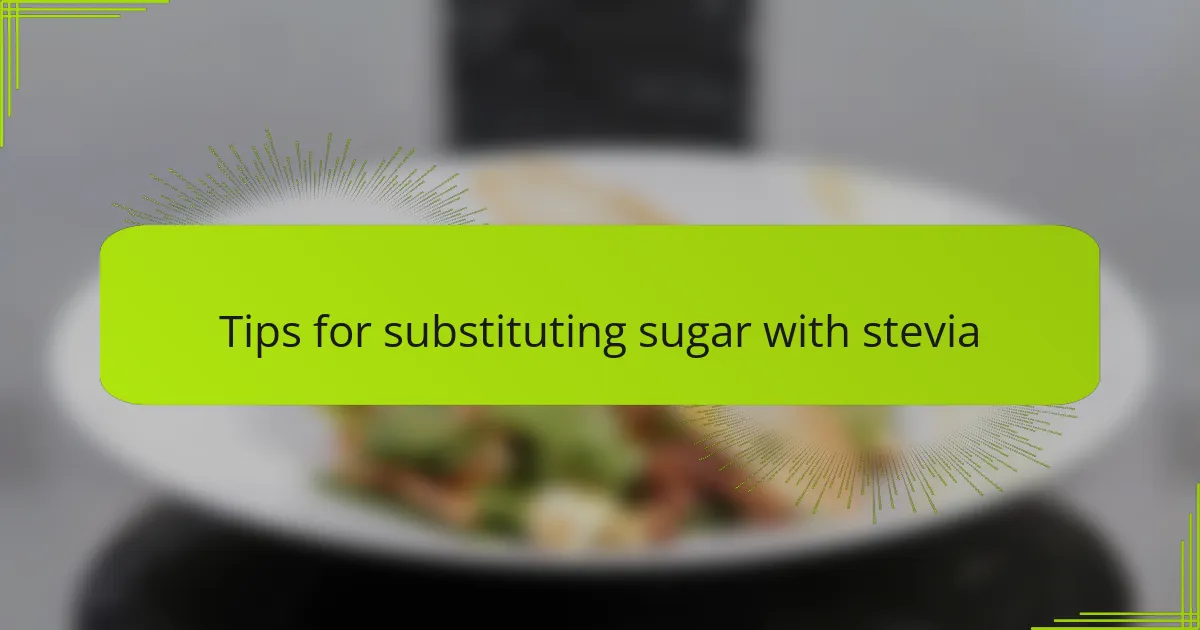
Tips for substituting sugar with stevia
One thing that really helped me was starting with small amounts of stevia and gradually adjusting. Since it’s so much sweeter than sugar, it’s easy to add too much and end up with a bitter aftertaste, which can be frustrating when you just want a simple, sweet treat. Have you ever had that cringe moment when your dessert tastes slightly off? That’s why patience is key here.
I also found mixing stevia with other natural sweeteners, like a bit of honey or maple syrup, helps round out the flavor and avoid that sharp edge stevia can sometimes have. This combination created a more balanced sweetness in my desserts and made the texture feel more familiar. It made me think—do I really need to ditch sugar completely, or can a blend offer the best of both worlds?
Measuring stevia precisely became a kind of art for me. Unlike sugar, stevia doesn’t measure cup for cup, so I switched to using teaspoons or even a scale when possible to get it right. Trust me, guessing amounts will only lead to inconsistent results and needless disappointment. Has anyone else wrestled with the challenge of re-learning how to “sweeten”? It’s all part of the journey to mastering this swap.
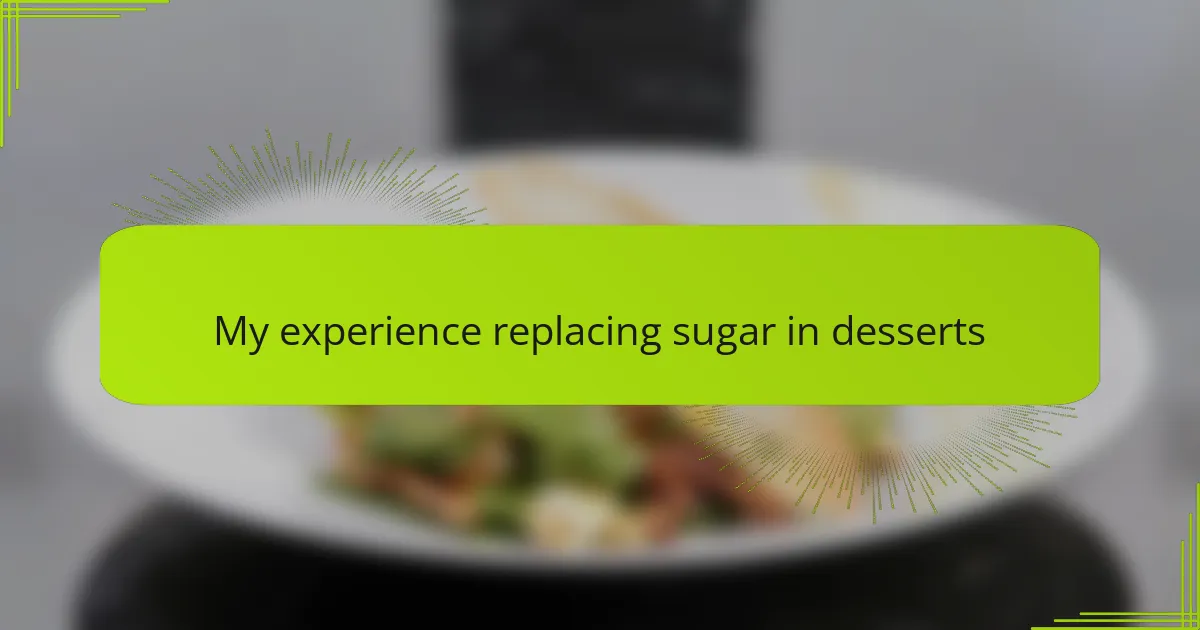
My experience replacing sugar in desserts
Replacing sugar with stevia in my favorite desserts was more than just swapping ingredients—it felt like learning a new language. I remember my first batch of cookies tasting strangely different, and I wondered if I had made a mistake. But as I kept experimenting, I realized it was just a matter of understanding how stevia interacts with other elements in the recipe.
At times, I struggled with the aftertaste, especially when I used too much stevia. That taught me to be patient and precise, measuring carefully and adjusting gradually until the sweetness felt just right. Have you ever had a dessert that didn’t quite hit the mark? I certainly have, and those moments pushed me to refine my approach.
What surprised me most was how this change challenged my creativity and technique. I had to rethink moisture levels, textures, and even baking times to get desserts that not only tasted good but felt satisfying. It turned out that replacing sugar was not just about health—it was about discovering a new side of baking I hadn’t explored before.
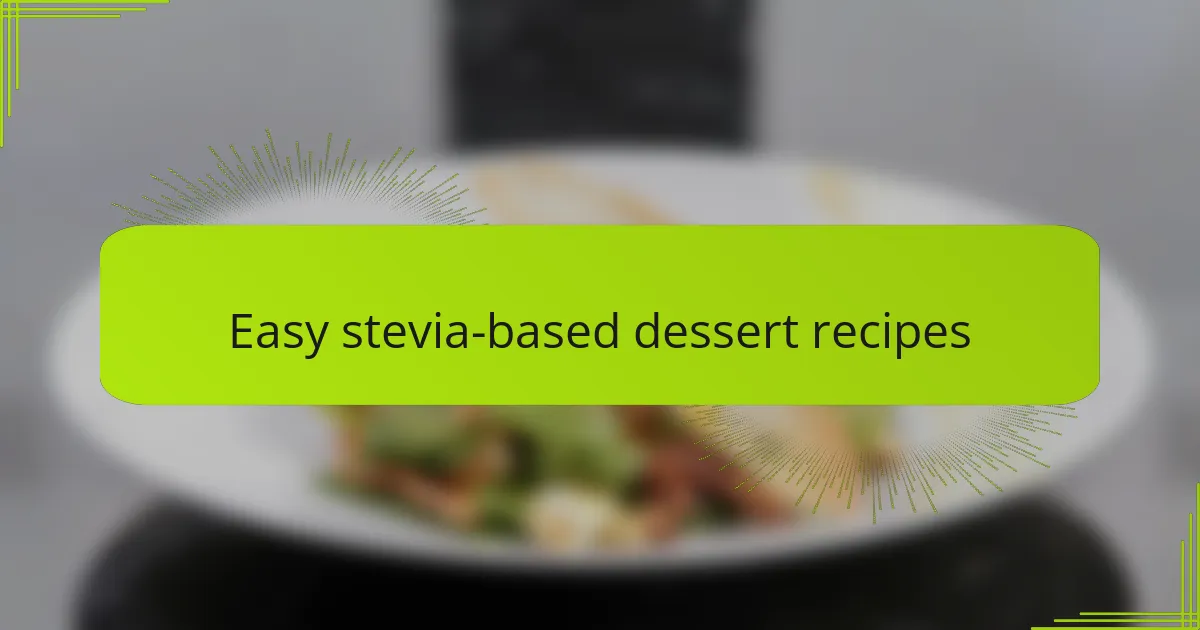
Easy stevia-based dessert recipes
Finding easy stevia-based dessert recipes was a game changer for me when switching from sugar. I started simple—think stevia-sweetened yogurt parfaits and no-bake chocolate mousse that didn’t rely on sugar’s bulk or caramelization. Have you ever been thrilled by how effortless it is to create something sweet and satisfying with just a few ingredients? That’s what these recipes offered me.
What I loved most was how forgiving stevia can be in certain desserts. For example, whipped cream sweetened with stevia held its texture beautifully without any gritty sugar crystals. It was surprising how a natural sweetener could maintain that light, airy quality I always craved in my desserts.
Of course, not every recipe worked perfectly on the first try. I learned to tweak my favorite fruit salad dressings by adding a splash of lemon juice alongside stevia to keep flavors vibrant and balanced. It made me realize that easy stevia desserts don’t mean no experimentation—they just invite a different kind of creativity. Would you be willing to try a few simple swaps and see how your dessert game changes?
